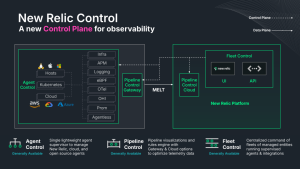The New York Public Library is a free provider of education and information for the people of New York and beyond. With 92 locations—including research and branch libraries—throughout the Bronx, Manhattan, and Staten Island, the library offers free materials, computer access, classes, exhibitions, programming, and more to everyone from toddlers to scholars, and has seen record numbers of attendance and circulation in recent years. NYPL serves more than 18 million patrons who come through its doors annually, and millions more around the globe who use its resources.
The library is focused on making the digital accessible for everyone. To support this, NYPL recently hired a new Chief Digital Officer to transform digital engagement, search and discovery, accessibility, and ease of use.
NYPL's digital ecosystem is structured into comprehensive portfolios, each managed by dedicated teams to ensure optimal service delivery and user experience:
- Digital Experience Platform
The library's online presence is powered by a Drupal-based content management system, which forms the digital front door of nypl.org. This platform serves as the primary digital gateway for patrons, offering intuitive navigation and seamless access to the library's vast resources.
- Library Services Platform
At the core of NYPL's digital offerings is a comprehensive catalog system. This platform not only manages the library's extensive circulating and special collection, but also supports a suite of services built upon it, enhancing discoverability and user engagement.
- eReading Portfolio
The portfolio also includes a proprietary e-reading platform app, allowing patrons to seamlessly borrow and download e-books and audiobooks using their library card credentials. Additionally, via the Research e-Books, NYPL provides access to public domain books, creating a centralized hub for researchers and readers. By aggregating these resources, NYPL facilitates easier discovery and utilization of valuable, copyright-free literary, and scholarly works.
- Digital Asset Management
This initiative ensures the long-term safeguarding and access of the library's digital content and special collections, including still images, audio/video materials, and born-digital archives. The rights management infrastructure safeguards the library's digital assets, particularly rare and sensitive materials, ensuring access permissions. Depending on the item's status, access may be granted through the public website or restricted to specific terminals within the library's reading rooms.
As NYPL employs more user experience exercises to ensure that digital services are available and accessible, observability for user experience testing helps the library focus on systems and community of users. When something does go wrong, teams can rapidly pinpoint the issue and get the right folks involved to find the solution.
New Relic makes it easier to figure out which specific query is causing a problem, whether it's a server or a database issue. NYPL can then observe the bottleneck and where the slowness is happening to fix that issue. New Relic also shows NYPL the busiest and slowest day to help reestablish alert thresholds. While observability helps the library pinpoint what's going on within the system, playbooks used by the portfolio teams help integrate alerts into reusable processes.
With observability in place, the team can focus on the work that is meaningful, rather than constantly fixing infrastructure issues or spending an excess of time figuring out what is going on.
For Senior Director of Digital Technology Garvita Kapur, using observability tech helps ensure that the team has a manageable workload and is able to focus on wider challenges, like the question of AI and managing synthetic content. While only about 10% of education, journalism, arts and entertainment content is generated by AI. That ratio is expected to turn on its head in as little as two years, with synthetic content possibly accounting for 90% of what we see on the Internet.
What does that mean for library users in terms of public trust, information integrity, individual safety and our role as a digital assets custodian? For this reason, the library is participating in the Synthetic Content Working Group for the AI Safety Institute with the National Institute of Standards and Technology to help evaluate tools and standards around digital trust.
이 블로그에 표현된 견해는 저자의 견해이며 반드시 New Relic의 견해를 반영하는 것은 아닙니다. 저자가 제공하는 모든 솔루션은 환경에 따라 다르며 New Relic에서 제공하는 상용 솔루션이나 지원의 일부가 아닙니다. 이 블로그 게시물과 관련된 질문 및 지원이 필요한 경우 Explorers Hub(discuss.newrelic.com)에서만 참여하십시오. 이 블로그에는 타사 사이트의 콘텐츠에 대한 링크가 포함될 수 있습니다. 이러한 링크를 제공함으로써 New Relic은 해당 사이트에서 사용할 수 있는 정보, 보기 또는 제품을 채택, 보증, 승인 또는 보증하지 않습니다.


